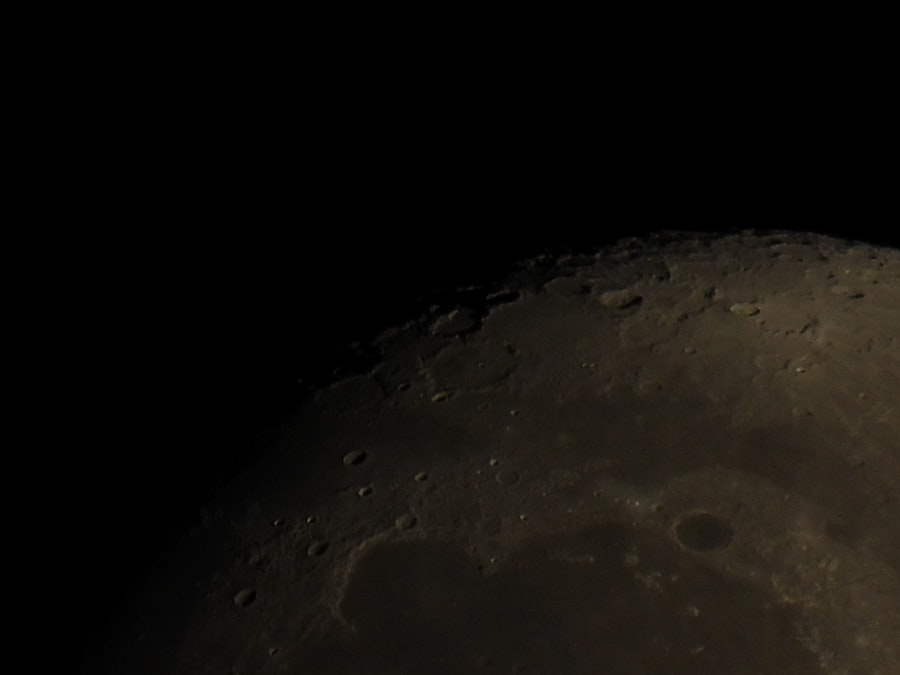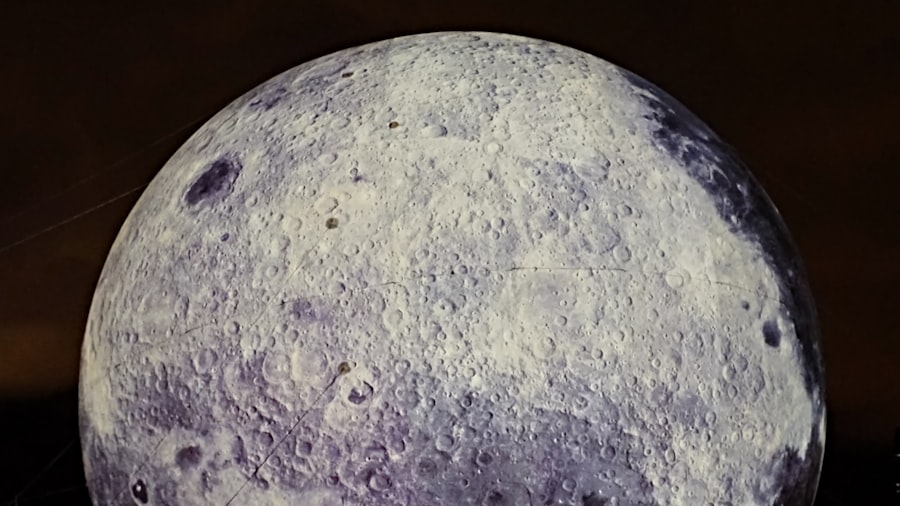The dawn of the 21st century has ushered in a renewed fervor for space exploration, often referred to as the “New Space Race.
The Moon, once a symbol of human achievement during the Apollo missions, has resurfaced as a focal point for exploration and potential resource extraction. This renewed interest is driven by advancements in technology, a growing understanding of the Moon’s resources, and the strategic importance of space in global geopolitics.
The Moon is seen as a stepping stone for future missions to Mars and beyond, as well as a potential source of valuable resources that could revolutionize life on Earth. The New Space Race is not merely about reaching celestial bodies; it encompasses economic interests, national security, and international relations.
As various players enter this arena, the stakes are higher than ever, prompting discussions about collaboration, competition, and the ethical considerations surrounding lunar exploration.
Key Takeaways
- The new space race is driven by the potential of lunar resources and the involvement of both governments and private companies.
- Historical context of lunar exploration provides insight into the geopolitical implications of lunar resource extraction.
- Governments play a significant role in the new space race, with international collaboration and competition shaping the future of lunar exploration.
- Private companies are heavily involved in the race for lunar resources, contributing to the challenges and risks of lunar resource extraction.
- Navigating the geopolitical struggle for lunar resources requires consideration of environmental and ethical implications, as well as the future of lunar exploration and resource utilization.
Historical Context of Lunar Exploration
The history of lunar exploration is rich and complex, marked by significant milestones that have shaped humanity’s understanding of space. The first successful human landing on the Moon occurred on July 20, 1969, when NASA’s Apollo 11 mission saw astronauts Neil Armstrong and Buzz Aldrin take their historic steps on the lunar surface. This monumental achievement not only showcased American ingenuity but also ignited a global fascination with space exploration.
Following Apollo 11, several more missions followed, culminating in Apollo 17 in 1972, which remains the last time humans have set foot on the Moon. However, lunar exploration did not cease with the Apollo program. The subsequent decades saw a shift in focus toward robotic missions, with various countries launching probes to study the Moon’s surface and gather data.
Notable missions included the Soviet Luna program, which achieved several firsts in lunar exploration, and more recently, China’s Chang’e program, which has successfully landed rovers and returned samples from the Moon. This historical context sets the stage for the current resurgence in lunar interest, as nations look to build upon past achievements while exploring new possibilities for human presence and resource utilization.
The Potential of Lunar Resources

The Moon is believed to harbor a wealth of resources that could be pivotal for future space endeavors and even life on Earth. Among these resources, helium-3 stands out as a potential game-changer. This isotope is rare on Earth but abundant on the Moon’s surface and is considered a promising fuel for nuclear fusion—a clean energy source that could address global energy demands.
Additionally, lunar regolith contains essential materials such as titanium, aluminum, and rare earth elements that are crucial for various industries. The prospect of mining these resources has sparked interest from both governmental and private sectors. The Moon’s low gravity makes it an ideal location for launching missions deeper into space, as extracting materials locally could significantly reduce costs associated with transporting resources from Earth.
Furthermore, establishing a sustainable presence on the Moon could serve as a testing ground for technologies needed for future Mars missions. As nations and companies explore these possibilities, the potential benefits of lunar resource extraction become increasingly apparent.
The Role of Governments in the New Space Race
| Country | Government Space Budget (in millions) | Number of Government-funded Space Agencies | Number of Government-launched Satellites |
|---|---|---|---|
| United States | 22,629 | 3 | 1,071 |
| China | 8,900 | 1 | 412 |
| Russia | 3,373 | 1 | 1,588 |
| European Union | 5,720 | 1 | 128 |
Governments play a crucial role in shaping the landscape of the New Space Race. National space agencies such as NASA, ESA (European Space Agency), Roscosmos (Russia), and CNSA (China National Space Administration) are at the forefront of lunar exploration efforts. These agencies not only conduct scientific research but also establish policies that govern space activities.
For instance, NASA’s Artemis program aims to return humans to the Moon by the mid-2020s and establish a sustainable presence there by the end of the decade. In addition to direct exploration efforts, governments are also investing in partnerships with private companies to leverage innovation and reduce costs. This collaboration has led to significant advancements in technology and infrastructure necessary for lunar missions.
However, government involvement also raises questions about regulation and oversight in an increasingly competitive environment. As nations pursue their interests in lunar exploration, they must navigate complex legal frameworks and international agreements to ensure responsible use of space resources.
The Involvement of Private Companies
The rise of private companies in space exploration has transformed the dynamics of the New Space Race. Companies like SpaceX, Blue Origin, and Astrobotic are not only competing with national agencies but also collaborating with them to achieve ambitious goals. SpaceX’s Starship program aims to facilitate lunar landings and beyond, while Blue Origin’s lunar lander project seeks to support NASA’s Artemis missions.
These private entities bring innovation, agility, and cost-effectiveness to the table, driving advancements that were once solely within the purview of government agencies. Moreover, private companies are exploring commercial opportunities related to lunar resources. The potential for mining operations on the Moon has attracted significant investment and interest from venture capitalists looking to capitalize on this emerging market.
As these companies develop technologies for resource extraction and transportation, they are also contributing to a broader understanding of what it means to operate in space sustainably. The interplay between government initiatives and private enterprise is reshaping the future of lunar exploration and resource utilization.
International Collaboration and Competition

While competition is a hallmark of the New Space Race, international collaboration is equally vital for advancing lunar exploration efforts. Countries recognize that many challenges associated with space exploration—such as technological development, safety protocols, and environmental concerns—are best addressed through cooperative efforts. Initiatives like the Artemis Accords aim to establish a framework for responsible behavior in space activities among participating nations.
However, collaboration does not eliminate competition; rather, it coexists alongside it. Nations are keenly aware of the strategic advantages that come with being first or most successful in lunar endeavors. This duality creates a complex landscape where countries must balance their ambitions with the need for cooperation.
As they navigate this terrain, they must also consider how their actions impact global perceptions and relationships within the international community.
Environmental and Ethical Considerations
As interest in lunar resource extraction grows, so too do concerns about environmental sustainability and ethical implications. The Moon is often viewed as a pristine environment; however, human activities could disrupt its delicate ecosystem. The potential for contamination from mining operations or waste generated by human presence raises questions about how to preserve this celestial body for future generations.
Ethical considerations also extend to issues of ownership and access to lunar resources. The Outer Space Treaty of 1967 established that no nation can claim sovereignty over celestial bodies; however, it does not provide clear guidelines on resource extraction or commercial activities. As nations and companies pursue their interests on the Moon, they must grapple with these ethical dilemmas while striving to ensure that their actions align with principles of sustainability and equity.
The Geopolitical Implications of Lunar Resource Extraction
The geopolitical landscape surrounding lunar resource extraction is intricate and multifaceted. As nations vie for access to valuable resources on the Moon, they must consider how their actions may influence global power dynamics. Countries with advanced space programs may gain strategic advantages over those without such capabilities, potentially leading to increased tensions or conflicts over access to resources.
Furthermore, alliances may shift as nations collaborate or compete in their lunar endeavors. For instance, partnerships between countries with complementary strengths could emerge as they seek to pool resources and expertise for successful missions. Conversely, rivalries may intensify as nations perceive threats from one another’s advancements in space technology or resource acquisition strategies.
Navigating these geopolitical implications will require careful diplomacy and foresight.
Challenges and Risks of Lunar Resource Extraction
Despite the promising potential of lunar resource extraction, numerous challenges and risks must be addressed before such endeavors can become a reality. Technical challenges include developing reliable technologies for mining operations in harsh lunar conditions, where extreme temperatures and radiation pose significant obstacles. Additionally, establishing infrastructure for transportation and processing resources on the Moon presents logistical hurdles that require innovative solutions.
Moreover, financial risks cannot be overlooked. The costs associated with lunar missions are substantial, and uncertainties surrounding market demand for lunar resources add another layer of complexity. Investors must weigh potential returns against the inherent risks involved in pioneering uncharted territory.
As nations and companies embark on this journey into lunar resource extraction, they must be prepared to navigate these challenges while remaining adaptable to changing circumstances.
The Future of Lunar Exploration and Resource Utilization
Looking ahead, the future of lunar exploration and resource utilization appears promising yet uncertain. As technological advancements continue to unfold, opportunities for sustainable human presence on the Moon will expand. The establishment of lunar bases could serve as hubs for scientific research, tourism, or even manufacturing—transforming the Moon into an integral part of humanity’s presence in space.
However, realizing this vision will require collaboration among nations and private entities alike. Developing frameworks for responsible resource management will be essential to ensure that lunar activities benefit all of humanity rather than exacerbating existing inequalities or conflicts. As stakeholders engage in discussions about the future of lunar exploration, they must prioritize sustainability and ethical considerations while pursuing their ambitions.
Navigating the Geopolitical Struggle for Lunar Resources
In conclusion, the New Space Race represents a complex interplay of ambition, innovation, collaboration, and competition among nations and private companies alike. As they navigate this evolving landscape, stakeholders must grapple with historical legacies while embracing new possibilities for exploration and resource utilization on the Moon. The potential benefits are immense—ranging from scientific discoveries to economic opportunities—but so too are the challenges associated with environmental sustainability and ethical considerations.
As humanity stands on the brink of a new era in space exploration, it is imperative that all players approach this endeavor with foresight and responsibility. By fostering international collaboration while addressing geopolitical tensions surrounding lunar resource extraction, they can work towards a future where space exploration serves as a unifying force rather than a source of division. Ultimately, navigating this geopolitical struggle will require wisdom, cooperation, and a commitment to ensuring that humanity’s reach into space benefits all rather than just a select few.
In recent years, the geopolitical struggle for lunar resources has intensified as nations and private entities race to establish a foothold on the Moon. This competition is not just about scientific exploration but also about securing valuable resources such as helium-3, rare earth elements, and water ice, which are crucial for future space missions and potential energy solutions on Earth. An insightful article discussing the implications of this lunar race can be found on Real Lore and Order. For a deeper understanding of the strategic maneuvers and international policies shaping this new frontier, you can read more about it here.
WATCH THIS! 🚀 Why The Moon Is The Next Battlefield: The Geopolitics of Cislunar Space
FAQs
What is the geopolitical struggle for lunar resources?
The geopolitical struggle for lunar resources refers to the competition and conflict between countries and private entities to gain control over and access to valuable resources on the moon, such as water ice, rare earth elements, and helium-3.
What are the key resources being sought after on the moon?
The key resources being sought after on the moon include water ice, which can be used for drinking water and to produce rocket fuel, rare earth elements for advanced technology, and helium-3 for potential future fusion energy production.
Which countries and entities are involved in the geopolitical struggle for lunar resources?
Countries such as the United States, China, Russia, and India, as well as private companies like SpaceX and Blue Origin, are actively involved in the pursuit of lunar resources.
What are the potential implications of the geopolitical struggle for lunar resources?
The potential implications of the geopolitical struggle for lunar resources include increased international tensions, the potential for conflict in space, and the need for international agreements and regulations to govern lunar resource extraction and utilization.
Are there any international agreements or regulations governing lunar resource extraction?
Currently, there are no specific international agreements or regulations governing lunar resource extraction. However, the Outer Space Treaty of 1967, which has been ratified by over 100 countries, prohibits any national appropriation of outer space, including the moon and other celestial bodies.
